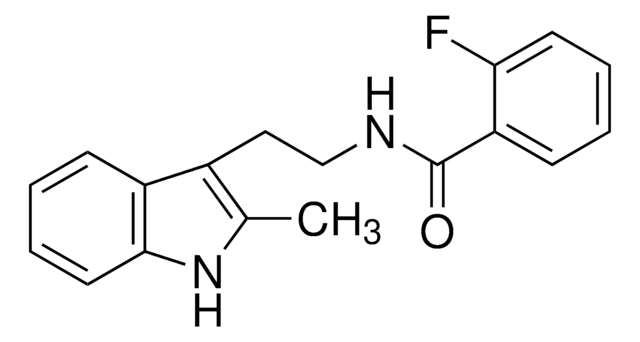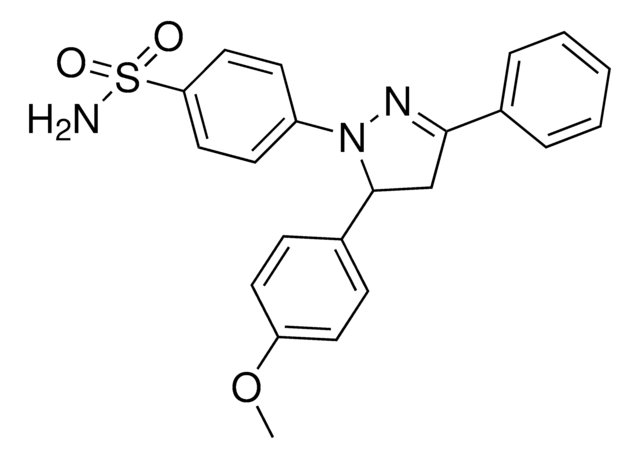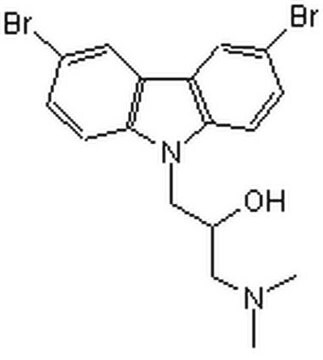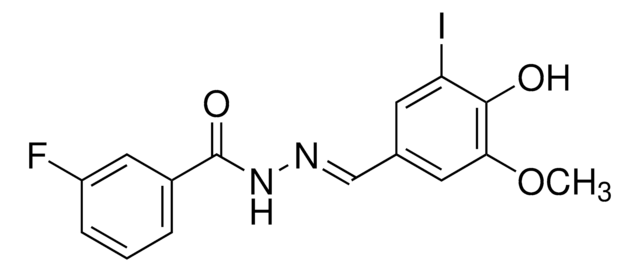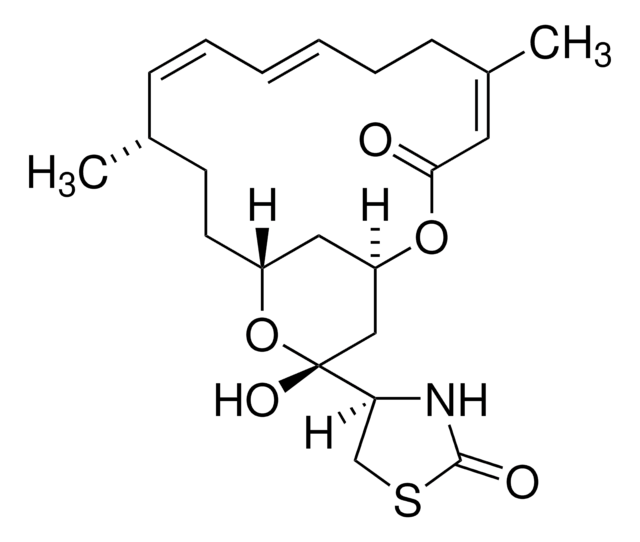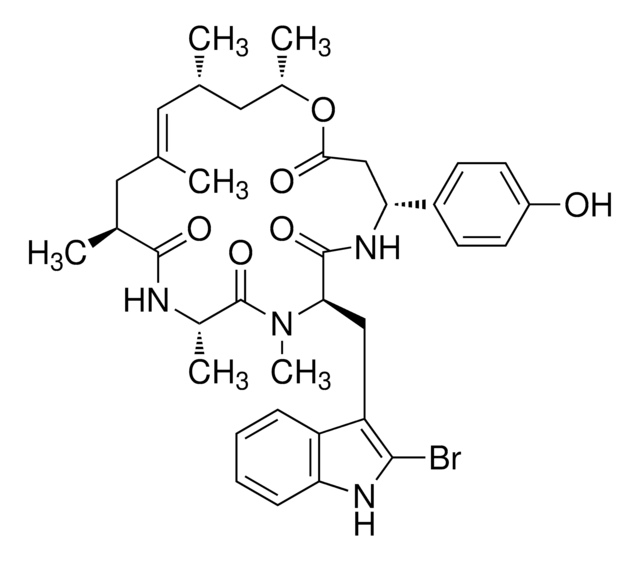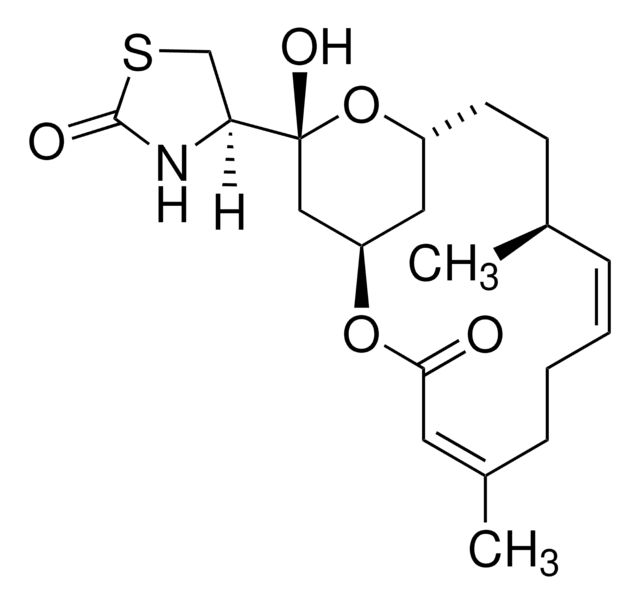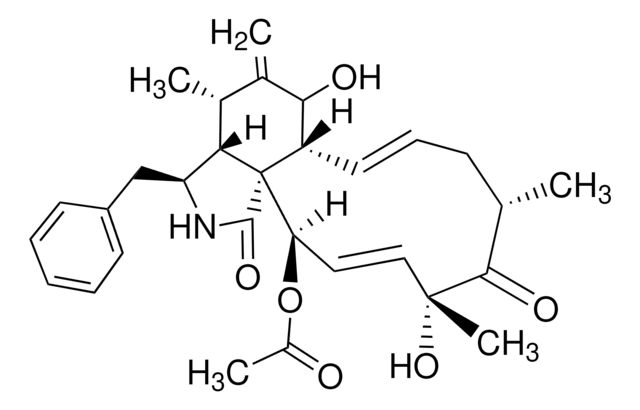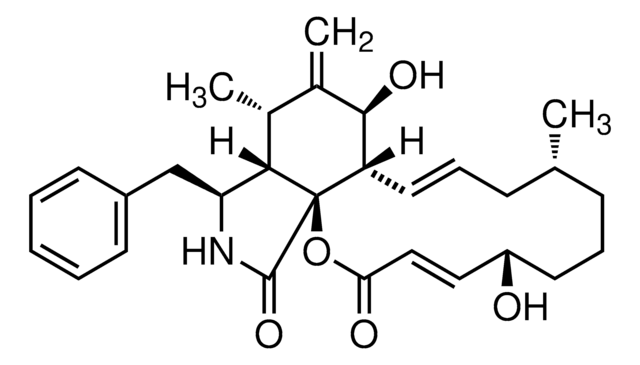W2270
Wiskostatin
Synonym(e):
1-(3,6-dibromocarbazol-9-yl)-3-(dimethylamino)propan-2-ol
About This Item
Empfohlene Produkte
Assay
≥98% (HPLC)
Qualitätsniveau
Form
powder
Farbe
white to beige
Löslichkeit
DMSO: 10 mg/mL, clear
Lagertemp.
2-8°C
SMILES String
CN(C)CC(O)Cn1c2ccc(Br)cc2c3cc(Br)ccc13
InChI
1S/C17H18Br2N2O/c1-20(2)9-13(22)10-21-16-5-3-11(18)7-14(16)15-8-12(19)4-6-17(15)21/h3-8,13,22H,9-10H2,1-2H3
InChIKey
XUBJEDZHBUPBKL-UHFFFAOYSA-N
Allgemeine Beschreibung
Anwendung
- as a small-molecule inhibitor of Wiskott-Aldrich syndrome protein (WASP) in human osteosarcoma U2OS cells and mouse-tail fibroblast cell lines
- as a neural (N)-WASP inhibitor in cultured neurons and in the human embryonic kidney (HEK293) cells expressing HA-Parkin
- as a neural (N)-WASP inhibitor in dorsal root ganglion (DRG) cells to investigate vascular endothelial growth factor (VEGF) effect on the actin related protein 2/3 complex (Arp 2/3)
Biochem./physiol. Wirkung
Signalwort
Danger
H-Sätze
Gefahreneinstufungen
Acute Tox. 3 Oral - Aquatic Chronic 4
Lagerklassenschlüssel
6.1C - Combustible, acute toxic Cat.3 / toxic compounds or compounds which causing chronic effects
WGK
WGK 3
Analysenzertifikate (COA)
Suchen Sie nach Analysenzertifikate (COA), indem Sie die Lot-/Chargennummer des Produkts eingeben. Lot- und Chargennummern sind auf dem Produktetikett hinter den Wörtern ‘Lot’ oder ‘Batch’ (Lot oder Charge) zu finden.
Besitzen Sie dieses Produkt bereits?
In der Dokumentenbibliothek finden Sie die Dokumentation zu den Produkten, die Sie kürzlich erworben haben.
Kunden haben sich ebenfalls angesehen
Unser Team von Wissenschaftlern verfügt über Erfahrung in allen Forschungsbereichen einschließlich Life Science, Materialwissenschaften, chemischer Synthese, Chromatographie, Analytik und vielen mehr..
Setzen Sie sich mit dem technischen Dienst in Verbindung.